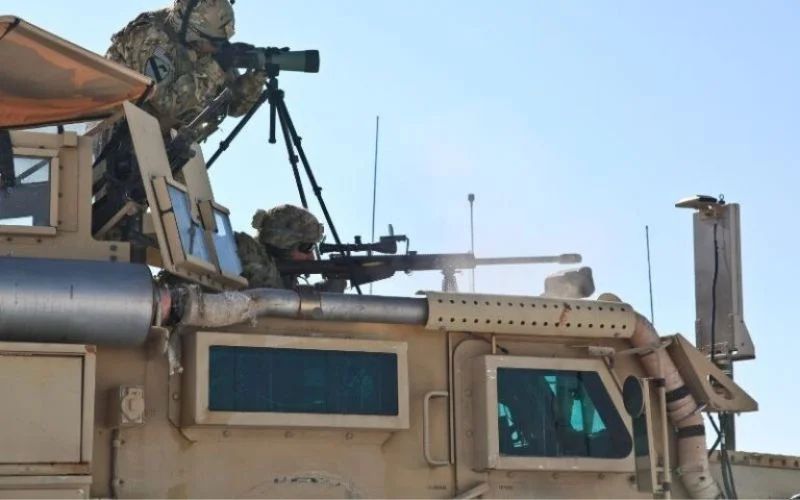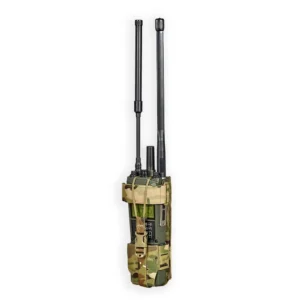How to Use a Two-Way Radio in Emergencies

Emergencies always catch us by surprise, and when they do, communication becomes a matter of life and death. If you are out on an outdoor adventure, on a tactical mission, in the wilderness, or during a natural disaster, the correct communication gadget can save your life. A two-way radio is a device that can keep you in touch. With its reliability, effectiveness, and ease of use, it’s a vital tool when other communication methods fail. However, learning to use a two-way radio effectively in emergencies is crucial to ensure it performs well when you need it most.
Bring Your Gear to the Next Level with the Chase Tactical Improved Multi-Platform Radio Pouch.
Why Use a Two-Way Radio in Times of Emergencies?
Two-way radios are particularly useful during emergencies, as they provide instant communication with the press of a button. Two-way radios do not rely on cellular networks, unlike cell phones, which can become ineffective during natural disasters or in areas with poor signal reception. They can function even in remote regions where rescue might take hours. Additionally, their battery life is longer than that of an ordinary smartphone, making them a reliable option in case other communication methods fail.
How to Use a Two-Way Radio in Emergency Situations?

It is important to know how to operate a two-way radio properly to communicate successfully in an emergency. Two-way radios are generally simple to operate; however, there are specific steps and tips to keep in mind for optimal performance in emergencies.
1. Set the Right Channel and Frequency
Before using your two-way radio in an emergency, ensure it is set to the correct channel and frequency. Radios often have multiple channels, each corresponding to a different frequency and, in turn, a distinct network. When creating an emergency communication, it’s important to tune into an emergency frequency or channel designated by local authorities or emergency response teams. Most radios come pre-programmed with these channels, but if not, check the user’s manual to program it to a designated emergency frequency.
2. Know Your Radio’s Range
Two-way radios typically operate within a specific range. If you are in an area with many buildings, such as a city, the signal may be shorter; however, in open space, the signal will travel much further. Be sure to know your radio’s range so you know how far you can be from others before losing contact. Keep in mind that physical objects like mountains or dense forests may interfere with the range of your unit.
3. Correct Use of the Push-to-Talk (PTT) Button
A Push-to-Talk (PTT) button activates most two-way survival radios, so you need to press the button to send your message. Press the button down long enough to deliver your message. Speak clearly into the microphone as you press the button and release it when you are done speaking. This allows others to hear your message clearly, free from background noise.
4. Write Short, Concise Sentences
When using a two-way radio during an emergency, keep your messages concise and clear. Avoid unnecessary descriptions or complex sentences because radio transmissions are sometimes unclear. Instead of saying, “Can anybody hear me? I’m having a bit of a crisis here and could do with some help,” say, “This is [your name]. I need help at [location].” Clear and simple communication is important, especially when every moment counts.
5. Monitor Your Battery Life
During an emergency, you may need your two-way radio for an extended period, as it is an ideal communication tool. To keep your radio from running out of power at a critical moment, monitor the battery life and bring spare batteries with you if possible. Most radios have an indicator to show the current battery level. If your radio is rechargeable, ensure it is fully charged before use in an emergency.
6. Use the Radio’s Emergency Features
The majority of two-way radios nowadays feature emergency functions, such as an SOS button or flashlight. These are intended for use during emergencies. When you are unable to communicate through speech, the SOS button will send a distress signal to the other members of your group. A flashlight will also be handy if you find yourself stranded in the dark or need to signal for help. Familiarize yourself with these features beforehand so that you can use them effectively during an emergency.
Conclusion
Two-way radios are a lifesaver during emergencies, providing the only reliable communication when everything else fails. Knowing how to use them effectively can be the game-changer in a life-or-death situation.
By tuning to the right channels, using emergency features, and adhering to good radio etiquette, you can optimize your two-way radio and stay in touch when it matters.
Frequently Asked Questions
How far will a two-way radio transmit in an emergency?
The two-way radio range is based on terrain, frequency, and power. The radios can cover 30 miles or more in open areas, but obstructions like mountains or buildings can reduce range.
What is the best two-way radio for emergencies?
Look for a durable two-way radio with extended battery life and emergency features, such as an SOS button or a flashlight. Radios with weather channels and wide coverage are also ideal.
Can I use a two-way radio to communicate with other group members?
Yes, if everyone in your group is using the same channel and frequency, you can communicate easily. Just make sure everyone knows how to use their radios properly.
How do I charge my two-way radio in an emergency?
Two-way radios are mostly rechargeable, so it’s a good idea to carry a portable power bank or solar charger if you anticipate using the radio over an extended period. Otherwise, have extra batteries if the radio uses disposable batteries.

